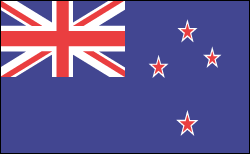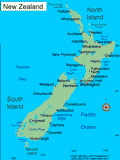New Zealand | Facts & Information

- New Zealand Profile
- History
- News and Current Events
Facts & Figures
-
Sovereign: Queen Elizabeth II (1952)
Governor-General: Sir Jerry Mateparae (2011)
Prime Minister: John Key (2008)
Land area: 103,734 sq mi (268,671 sq km); total area: 103,737 sq mi (268,680 sq km)
Population (2014 est.): 4,401,916 (growth rate: 0.83%); birth rate: 13.4/1000; infant mortality rate: 4.59/1000; life expectancy: 80.93
Capital (2011 est.): Wellington, 410,000
Largest cities: Auckland, 1.452 million
Monetary unit: New Zealand dollar
Languages: English (de facto official) 89.8%, Maori (de jure official) 3.5%, Samoan 2%, Hindi 1.6%, French 1.2%, Northern Chinese 1.2%, Yue 1%, Other or not stated 20.5%, New Zealand Sign Language (de jure official)
Ethnicity/race: European 71.2%, Maori 14.1%, Asian 11.3%, Pacific peoples 7.6%, Middle Eastern, Latin American, African 1.1%, other 1.6%, not stated or unidentified 5.4%
Religions: Christian 44.3% (Catholic 11.6%, Anglican 10.8%, Presbyterian and Congregational 7.8%, Methodist, 2.4%, Pentecostal 1.8%, other 9.9%), Hindu 2.1%, Buddhist 1.4%, Maori Christian 1.3%, Islam 1.1%, other religion 1.4% (includes Judaism, Spiritualism and New Age religions, Baha'i, Asian religions other than Buddhism), no religion 38.5%, not stated or unidentified 8.2%, objected to answering 4.1%
National Holiday: Waitangi Day, February 6
Literacy rate: 99% (2003 est.)
Economic summary: GDP/PPP (2013 est.): $114.9 billion; per capita $30,400. Real growth rate: 2.5%. Inflation: 1.3%. Unemployment: 6.43%. Arable land: 1.76%. Agriculture: wheat, barley, potatoes, pulses, fruits, vegetables; wool, beef, lamb and mutton, dairy products; fish. Labor force: 2.413 million: services 74%, industry 19%, agriculture 7% (2006). Industries: food processing, wood and paper products, textiles, machinery, transportation equipment, banking and insurance, tourism, mining. Natural resources: natural gas, iron ore, sand, coal, timber, hydropower, gold, limestone. Exports: $37.84 billion (2013 est.): dairy products, meat, wood and wood products, fish, machinery. Imports: $37.35 billion (2013 est.): machinery and equipment, vehicles and aircraft, petroleum, electronics, textiles, plastics. Major trading partners: Australia, U.S., Japan, China, Singapore, Germany (2006).
Member of Commonwealth of Nations
Communications: Telephones: main lines in use: 1.88 million (2012); mobile cellular: 4.922 million (2012). Broadcast media: state-owned Television New Zealand operates multiple TV networks and state-owned Radio New Zealand operates 3 radio networks and an external shortwave radio service to the South Pacific region; a small number of national commercial TV and radio stations and many regional commercial television and radio stations are available; cable and satellite TV systems are available (2008). Internet hosts: 3.026 million (2012). Internet users: 3.4 million (2009).
Transportation: Railways: total: 4,128 km (2006). Roadways: total: 94,160 km; paved: 62,759 km (includes 199 km of expressways); unpaved: 32,143 km (2012). Waterways: 1,609 km; of little importance to transportation. Ports and harbors: Auckland, Lyttelton, Manukau Harbor, Marsden Point, Tauranga, Wellington. Airports: 123 (2013).
International disputes: territorial claim in Antarctica (Ross Dependency).









